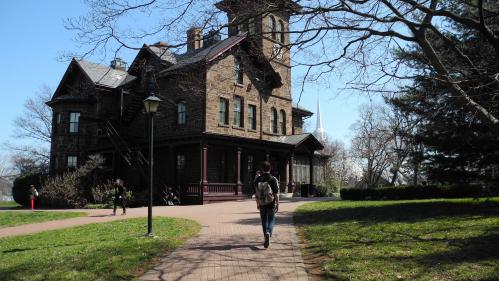from the Daily Targum
This year marks the 100th anniversary of the founding of Douglass Residential College, formerly named the New Jersey College for Women. To honor the milestone, several faculty members collaborated to release a book depicting the 100-year pursuit for female higher education.
The idea for the book was conceived by a research class. In 2015, Mary Hawkesworth, a professor in the departments of Political Science and Women’s and Gender Studies, co-taught the course with, Kayo Denda, head of the Margery Somers Foster Center and Fernanda Perrone, archivist and head of the Special Collections and University Archives.
Students in the course analyzed the context of women and activism throughout Rutgers’ history, utilizing the University archives.
With the then-approaching 250th anniversary of Rutgers, the Institute for Women’s Leadership Board of Directors began discussing the possible elimination of women’s history from the celebration.
“We were concerned that women be included in the celebration, in terms of all the historical accomplishments. Because Rutgers was an all-male institution for so long, we were worried that people wouldn’t talk about women ... and the struggle to create Douglass,” Hawkesworth said.
The research inspired the documentary, “From the Boarding House to Board Room: 250 Years of Women at Rutgers," and soon attracted the attention of Jacquelyn Litt, dean of the Douglass Residential College. Litt considered the possibility of a book — Hawkesworth, Denda and Perrone agreed and started its creation soon after.
This was not the first book dedicated to the history of the Douglass College. Denda said, George Schmidt, a former professor in the Department of History, released a book in 1968 for the 50th anniversary of the college. What makes his work unique is its feminist approach, with emphasis on oral and written records, as well as student and alumnae perspectives.
Before beginning any research, the three women discussed the resources present in the archives and which of these resources should be honed in on. This conceptualization took around six months, Hawkesworth said.
The archives hold numerous accounts of female experiences throughout the University's two and a half centuries, some of which came as surprises to Hawkesworth — one being the existence of a women’s version of Rutgers established in Manhattan in 1837, funded by Henry Rutgers himself.
“That early 19th-century history shocked us, because we knew the Board of Trustees at the men’s college in New Brunswick was absolutely opposed to the education of women. So all of a sudden to find the benefactor, who had given some money to the men’s school, had given even more money to create a women’s college, was astonishing,” Hawkesworth said.
The women’s college suggested a merger of the two institutes in the 1890s, but was dismissed by the Board of Trustees. At that time, the College of Saint Elizabeth was the only one in New Jersey that was awarding degrees to women, which meant that women had to go out of state to seek higher education, according to the Institute for Women's Leadership.
The New Jersey State Federation of Women’s Clubs, led by Mabel Smith Douglass, who Douglass Residential College is named after, began fundraising for an in-state institute for women. After raising $150,000 from door-to-door fundraising, the New Jersey College for Women was created.
Though a female educational counterpart now existed, women were not allowed to enroll in Rutgers College until 1972 — when the male-student ratio was more than six times that of females in the first year, Hawkesworth said.
As a phenomenon such as this occurred less than 50 years ago, the chase for educational equity is one fairly recent and still relevant to this day.
“The way that we framed the book is in relation to the history of education in the United States, so we talk about what the norms for men’s education were and how they compared to women’s education. We (also) wanted to look at issues of institutional racism and what was required to change those institutions to make them better spaces for 21st-century education: How do we change an institution to make it equitable? The book has lots of issues that are still issues of contemporary debate,” Hawkesworth said.


